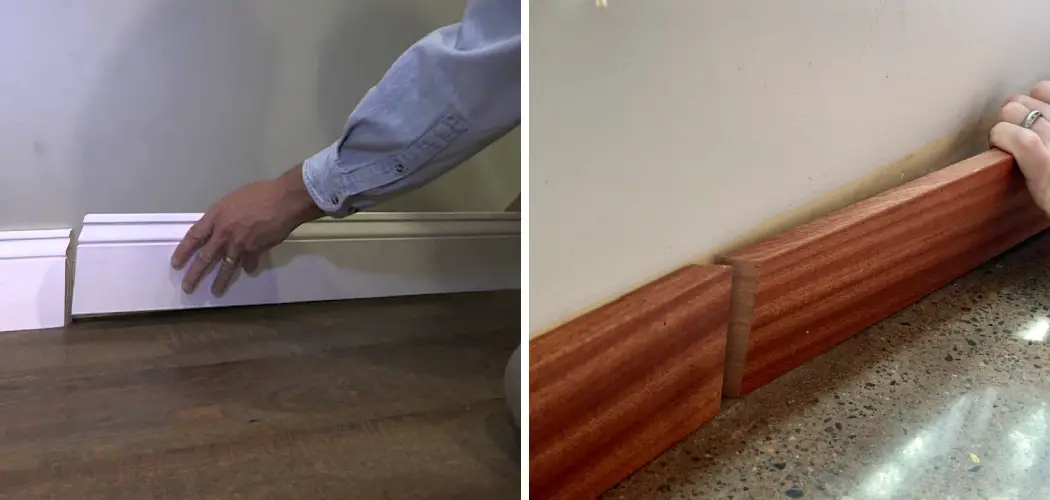One of the most common problems that homeowners face is how to hide the seams between baseboards and flooring. This can be a challenging task, but it can be done quickly and easily with a little bit of know-how. This blog post will show you how to hide baseboard seams using caulk and a few basic tools. We will also provide tips on how to ensure a seamless finish.
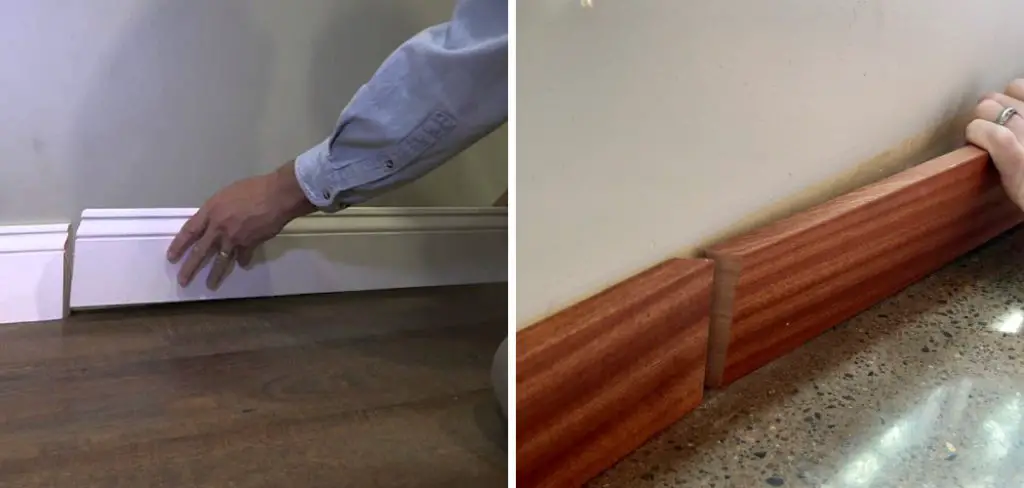
There are a few different ways to hide baseboard seams, and which one you choose will depend on the type of baseboard you have and the look you’re trying to achieve. If your baseboard is made from a single piece of wood, you can use a wood filler to fill in the seams. If your baseboard is made from multiple pieces of wood, you can use caulk or paint to cover up the seams. Read on for helpful advice on hiding those pesky seams!
Summary: Baseboard seams can be a pain to hide, but with a little know-how and a few supplies, you can easily make them disappear. Follow these simple steps: 1. Start by cutting the baseboard to the desired length. 2. Sand the edges of the board so that they are smooth and flush with the walls. 3. Apply a thin layer of latex paint to the bottom of the board. 4. Place the board against the wall and press down so that the paint is evenly distributed. 5. Let the paint dry completely. 6. Once the paint is dry, use a wood filler to fill in any gaps or cracks in the board. 7. Sand the filler until it is smooth. 8. Applied a second layer of latex paint to the top of the board. 9.
Why You Should Hide Baseboard Seams?
There are a few reasons you might want to hide baseboard seams. First, if your home has old, drafty baseboards, hiding the seams can help prevent cold air from coming in through the cracks. Second, if you have new baseboards that are not perfectly level, hiding the seams can help create a more polished look.
Finally, if you don’t like the way visible seams look, hiding them can give your home a neater appearance. There are a few different ways you can hide baseboard seams. You can use caulk, putty, or painter’s tape. You can also use trim molding or baseboard covers. We have discussed different ways how to hide baseboard seams. So be sure to check them out.
10 Ways on How to Hide Baseboard Seams
1. Use tape:
You can use painter’s tape or masking tape to cover the seam and then paint over it. This is a quick and easy way to cover up the seam, and it will also help prevent paint from seeping under the tape.
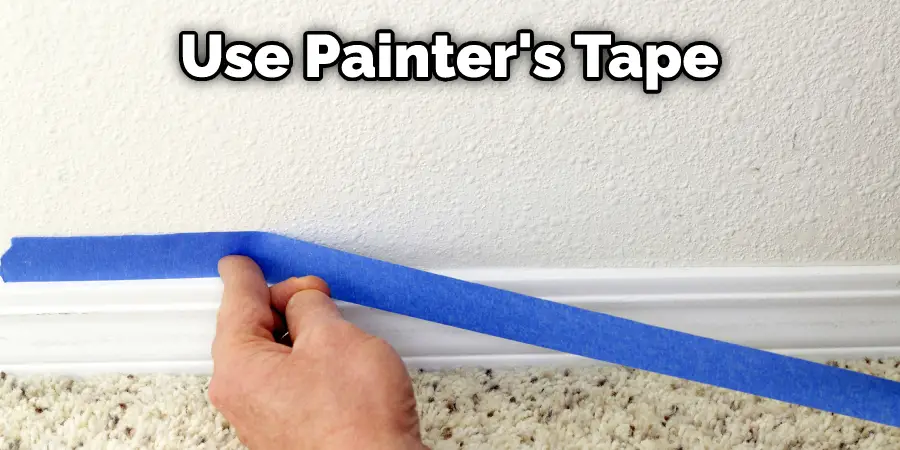
2. Use caulking:
Another way you can try to hide those baseboard seams is by using caulking. You can buy caulking at any hardware store, and it’s pretty easy to use. Apply the caulking to the seam and then smooth it out with your finger. The caulking will dry clear, so it shouldn’t be too noticeable.
3. Paint the Seam:
If you don’t want to use caulking, you can always try painting the seam. This is a pretty easy fix, and it can actually look pretty good if done correctly. Just make sure to use paint that matches your baseboards and walls.
4. Use a Baseboard Molding:
Baseboard moldings are an easy way to cover up any gaps or seams between two pieces of the baseboard. There are many different styles of baseboard molding, so you can choose one that best fits the style of your home. To install a baseboard molding, simply nail it using finishing nails.
5. Use Wood Filler:
Wood filler is another great way to cover up baseboard seams. It can also help to fill in any holes or cracks that might be present. Apply the wood filler to the seam using a putty knife. Allow it to dry completely before sanding it down smooth. You may need to apply a second coat of wood filler to get a completely smooth finish.
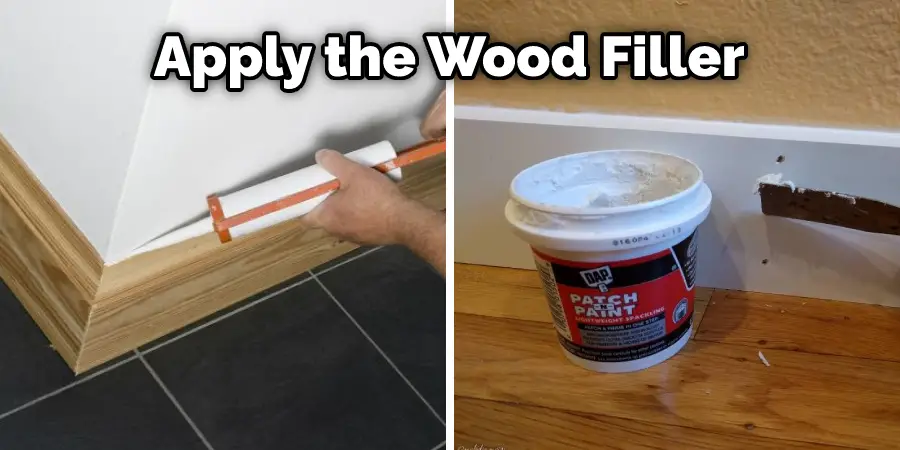
6. Install the Baseboard with Nails:
If you’re installing the baseboard yourself, you can try nailing it into place. This is a pretty easy fix, and it can actually look pretty good if done correctly. Just make sure to use nails that are the right size and that you don’t hammer them in too hard.
7. Add Trim to the Baseboard:
You can add some trim if you really want to hide the seams in your baseboard. This will give the baseboard a more finished look and make the seams less noticeable. You can use any trim you like, but we recommend using something that is fairly thin so it doesn’t make the baseboard look too bulky. You can find trim at most home improvement stores or online.
8. Use Baseboard Covers:
If you don’t want to add trim to your baseboard, you can use baseboard covers. These are pieces of molding that attach to your baseboard and cover the seams. Baseboard covers come in various styles, so you can find one that matches your décor.
Installing baseboard covers is a relatively easy DIY project. You’ll need to measure the length of your baseboard and cut the covers to size. Then, you’ll attach the covers to the baseboard with adhesive and nails.
9. Add Crown Molding:
Crown molding is a great way to cover up baseboard seams. It’s also an easy way to add a touch of elegance to any room. Simply attach crown molding to the top of your baseboards using finishing nails and wood glue. You can then paint or stain the crown molding to match your baseboards.
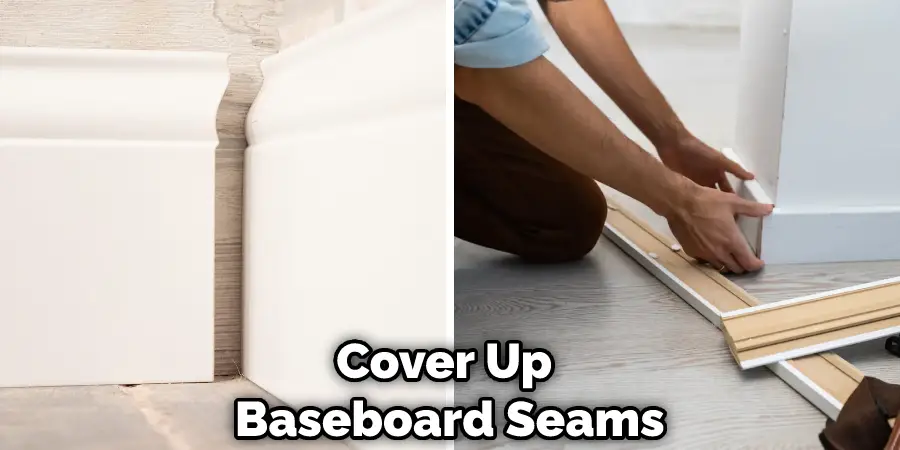
10. Stain the Baseboard:
You can use a dark stain to make the seams less noticeable. First, apply a coat of wood conditioner and let it sit for about 30 minutes. Then, apply the stain with a brush or rag. Wipe off any excess stain with a clean cloth. Let the baseboard dry for at least 24 hours before adding a topcoat.
Some Helpful Tips and Suggestions
Here we have given some tips and suggestions on how to hide baseboard seams.
- Start by caulking the seams. This will help to create a smooth, finished look and will also help to prevent any dirt or debris from collecting in the cracks.
- You can also use painter’s tape to mask the seams while you’re painting temporarily. This will give you a clean, straight line to work with and make it easier to touch up later.
- If you’re looking for a seamless look, you can try using baseboard molding that’s been pre-finished. This molding is designed to fit together perfectly and can be found at most home improvement stores.
- Another option is to install your baseboards with adhesive caulk or construction adhesive. This will create a stronger bond and will help to prevent the boards from separating over time.
- Don’t forget to touch up the paint once you’ve installed your baseboards. This will ensure that your seams are hidden and that your finished product looks its best.
- Always use a level when installing your baseboards. This will help to prevent any unwanted gaps or uneven lines.
- If you’re having trouble getting the perfect fit, don’t be afraid to ask for help. The experts at your local home improvement store can usually offer some helpful tips and advice.
With these helpful tips, you should be able to hide those pesky baseboard seams in no time successfully!
Should There Be a Gap Between Baseboard and Floor?
The short answer is no. There should not be a gap between your baseboard and the floor. If there is, it means your trim wasn’t installed properly. Gaps can occur for several reasons:
- The baseboard wasn’t cut properly. It should be cut at a 90-degree angle to butts up against the floor. If it’s not cut at a 90-degree angle, it will leave a gap.
- The wall isn’t level. Over time, walls can settle and become uneven. This can cause the baseboard to sit away from the floor, creating a gap.
- The trim wasn’t installed properly. If the trim isn’t level or plumb, it will create a gap between the baseboard and floor.
- There’s expansion or contraction. Wood expands and contracts with changes in temperature and humidity. This can cause gaps to form between the baseboard and floor.
- The floor isn’t level. If the floor is uneven, it can cause the baseboard to sit away from the floor, creating a gap.
- There’s something blocking the baseboard. If a doorstop or other object blocks the baseboard, it will create a gap.
How Do You Fill Gaps in Baseboards?
Filling gaps in baseboards can be a bit of a challenge, but there are a few different ways to do it. One way is to use caulk. This will work if the gap is small and not too noticeable. You can also use putty or wood filler for larger gaps. Another option is to install new baseboards that are a bit wider to cover the gaps.
Whichever method you choose, make sure to fill the gaps before painting or staining the baseboards to look seamless. If you want to avoid gaps altogether, you can install one-piece baseboards. These are baseboards that are cut from a single piece of wood and therefore have no joints or seams. However, they can be more difficult to install and may be more expensive than traditional baseboards.
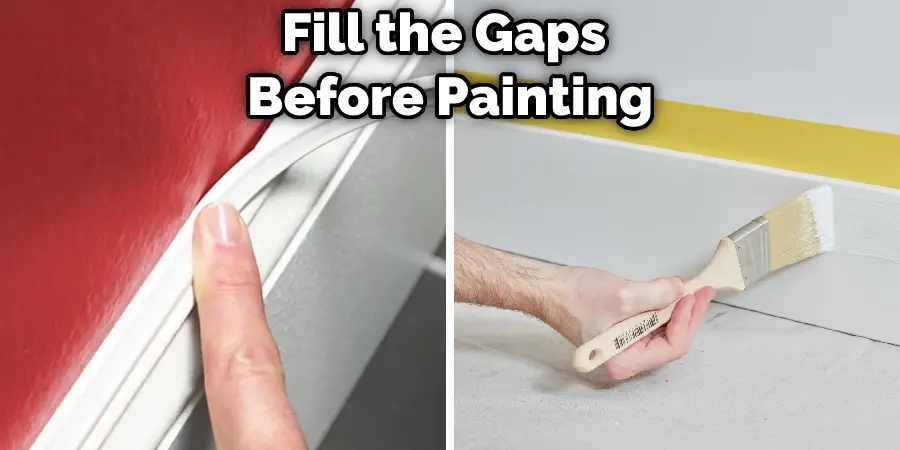
Conclusion
Seamless baseboard installation may seem like a daunting task, but it can be done quickly and easily with the right tools and techniques. The techniques we’ve shared today will help you conceal those pesky seams and create a polished finished look for your room.
If you’re looking for an easy way to hide your baseboard seams, this article on how to hide baseboard seams is for you. By following these simple steps, you can make your baseboards look seamless and polished in no time. Have you tried any of these methods? Let us know in the comments!

